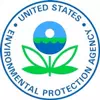Boilers
Boilers burn fuel to generate steam for space heating, hot water, and generating electric power. The environmental impact of boilers can arise from air emissions from fuel combustion, wastewater from cooling and cleaning, and solid waste from ash disposal. This page describes the potential impacts, the rules that have been developed to deal with the impacts, and the associated compliance requirements.
In addition to verifying compliance with the regulations, facilities are advised to implement a comprehensive energy audit. Finding opportunities to minimize energy requirements will in turn minimize the load on boilers, leading to lower fuel consumption and minimizing waste generation.
Boilers commonly use gas, oil, coal, solid waste, or a combination of these depending on fuel availability, price and when the units were installed.
Pollutants
- Air Emissions from boilers include
- Smog producing compounds:
- nitrogen oxides
- volatile organic compounds
In the presence of sunlight, these materials combine to produce ground-level ozone, which can:
- exacerbate asthma
- cause lung damage
- irritate eyes
- damage plant life
- Particulate matter: Fine particles can lodge in the lungs and cause respiratory difficulties.
- Carbon monoxide: combines with hemoglobin and prevents oxygen transport.
- Sulfur dioxide: a component of acid rain
- Air Toxins (Toxics): Air toxics are known to cause or are suspected of causing adverse health effects in humans and the environment
- Greenhouse Gases: Carbon dioxide, a product of combustion sources, is a greenhouse gas that contributes to global warming.
- Wastewater
Non-combustion wastes are generated from activities related to operating boilers and are typically released to water. Non-combustion wastes include:
- once-through cooling water
- cooling system blowdown
- boiler blowdown
- water-side boiler cleaning
- demineralizer regenerant
- Waste Ash
Bottom and fly ash and flue gas desulfurization (FGD) wastes result from combustion but are not released through the stack. Ash is typically a solid waste and FGD waste can either be a solid waste or a slurry. Because ash can contain heavy metals and other hazardous components it should be disposed of properly
| Fuel | Air Emissions | Non-Combustion Waste | Combustion Waste |
|---|---|---|---|
| Coal |
|
|
|
| Oil |
|
|
|
| Gas |
|
|
|
- SO₂
- Sulfur Dioxide
- NOx
- Nitrogen Oxides
- CO
- Carbon Monoxide
- VOC
- Volatile Organic Compounds
- PM
- Particulate Matter
- HAP
- Hazardous Air Pollutant
- TSS
- Total Suspended Solids
- TDSS
- Total Dissolved + Susp. Solids
Compliance Requirements
For regulatory information for Industrial/Commercial/Institutional Boilers, see the Combustion Portal.
Clean Air Act (CAA)
New Source Performance Standards
Section 111 of the Clean Air Act, "Standards of Performance of New Stationary Sources," requires EPA to establish federal emission standards for source categories which cause or contribute significantly to air pollution. These standards are intended to promote use of the best air pollution control technologies, taking into account the cost of such technology and any other non-air quality, health, and environmental impact and energy requirements. These standards apply to sources which have been constructed or modified since the proposal of the standard. Since December 23, 1971, EPA has promulgated 88 such standards and associated test methods.
For detailed information, see the Combustion Portal Boiler NSPS section. ![]()
National Emission Standards for Hazardous Air Pollutants
National Emissions Standards for Hazardous Air Pollutants (NESHAPs) are emissions standards set by U.S. EPA for an air pollutant not covered by National Ambient Air Quality Standards (NAAQS) that may cause an increase in fatalities or in serious, irreversible, or incapacitating illness. The standards for a particular source category require the maximum degree of emission reduction that the EPA determines to be achievable, which is known as the Maximum Achievable Control Technology (MACT). These standards are authorized by Section 112 of the Clean Air Act and the regulations are published in 40 CFR Parts 61 and 63.
For detailed information, see the Combustion Portal Boiler NESHAP section.
Asbestos
Any facility that contains asbestos, often used in insulation for boilers and pipes, is subject to the Asbestos National Emission Standard for Hazardous Air Pollutants (NESHAP). The Demolition and Renovation standard stipulates EPA notification and proper handling and disposal when asbestos containing material is disturbed.
Title V of the Clean Air Act mandates that states compile all applicable standards, such as those that apply to boilers, into a single permit for each major source.
Find more information on asbestos on the Asbestos page, and find information for your state on the Asbestos State Regulation Locator.
NOx SIP Call
On September 24, 1998, EPA finalized a "Finding of Significant Contribution and Rulemaking for Certain States in the Ozone Transport Assessment Group Region for Purposes of Reducing Regional Transport of Ozone" (commonly known as the "NOx SIP Call") requiring 22 States and the District of Columbia to submit State implementation plans that address the regional transport of ground-level ozone. The rule requires emission reduction measures to be in place by May 1, 2003. These measures will include controls on ozone precursors, such as NOx, emitted by fossil fuel-fired boilers and power generation units.
Boilers with a rated capacity over 250 million BTUs that are located in the eastern half of the US should be in contact with their state permitting agencies to see how this may apply.
Water used to maintain boilers, which can contain contaminants like those listed below, must be managed in accordance with the facility’s pretreatment program if, as in most cases, the facility discharges to a Publicly Owned Treatment Works. Likewise, if the facility is a direct discharger the effluent standards for contaminants would be addressed in the CWA National Pollutant Discharge Elimination System (NPDES) permit.
| Waste Stream | BAT Effluent Limitation Guidelines |
|---|---|
| All discharges | pH, poly-chlorinated biphenyls (PCBs) |
| Bottom ash transport waters and low volume waste sources | TSS, oil and grease |
| Chemical boiler metal cleaning wastes | TSS, oil and grease, iron, copper |
| Non-chemical metal cleaning wastes | Reserved (low volume wastewater limits apply) |
| Fly ash transport water (including economizer ash) | No discharge allowed (based on availability of dry disposal methods and the potential for reuse of fly ash transport water) |
| Once-through cooling water | Total residual chlorine (TRC) of free available chlorine (FAC), depending on facility’s generating capacity |
| Cooling water blowdown | FAC, chromium, zinc, other 126 priority pollutants where they are found in chemicals used for cooling tower maintenance |
| Coal pile runoff | TSS |
Ash from boilers fueled strictly by oil and coal may be subject to disposal requirements at the state level. It is not regulated as hazardous waste at the federal level.
States commonly require that ash be disposed of in solid waste landfills that comply with the sanitary landfill requirements of the Resource Conservation and Recovery Act Subtitle D. More information on fossil fuel combustion ash disposal is available at: https://archive.epa.gov/epawaste/nonhaz/industrial/special/fossil/web/html/index.html
More resources
None located.




